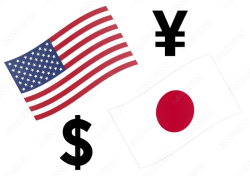
Flexity Analysis for USDJPY
Forecast Overall(Short-Term, Long-Term): ST=Undecided LT=Probably Up
Forecast Methods(Short-Term, Long-Term):
[Method0] ST=Same LT=Down
[Method1] ST=Down LT=Up
[Method2] ST=Up LT=Up
FlexityIndicator Analysis Method(0)
Short-Term: **USDJPY Price Outlook:** Based on the analysis of technical indicators and market sentiment: - **Positive Signals:** The MACD shows a buy signal, there's a pivot bottom indicating potential bullish momentum, and a rare golden star signal suggests possible gains. - **Caution Factors:** Mixed moving average signals, high volatility expected, resistance levels at JPY147.50 and 147.70 which could cap upward movement, and a broken short-term trend suggesting possible slowing of upward momentum. **Conclusion:** The price is more likely to remain stable or experience slight fluctuations due to mixed indicators and high uncertainty. There's potential for bullish movement but with caution advised. **Final Answer:** The price is expected to stay the same (neutral) in the short term. Long-Term: The analysis suggests that the USD/JPY pair is expected to **go down** in the long term. This conclusion is based on the breakout from a narrow rising trend indicating slowing upward momentum, the presence of resistance at JP¥148.08 which may hinder further gains, and the technical indicators suggesting potential bearish signals. The high volatility expected could exacerbate downward movement if the price fails to break above the resistance level.
Result: [Method0] ST=Same LT=Down
FlexityIndicator Analysis Method(1)
Short-Term: **Short-Term Outlook for USD/JPY: Expected to Decrease** Based on the analysis of recent forecasts and market trends: - **Institutional Predictions**: Majority of institutions (Goldman Sachs, Nomura, MUFG, SocGen) predict a bearish trend, expecting USD/JPY to decrease. Rabobank is neutral at 140 with a possible short-term rebound but still expects it to remain around that level. - **BOJ Rate Hike Impact**: The BOJ's rate hike has already caused a 1% drop in USD/JPY, indicating yen strength and dollar weakness. - **HSBC's Outlier**: While HSBC predicts an increase to 145 due to capital outflows, this is outweighed by other factors like US recession risks and ongoing yen strengthening from higher BOJ rates. **Conclusion**: The short-term outlook suggests a downward trend for USD/JPY, with most institutions expecting it to decrease. Long-Term: The analysis indicates that the USD/JPY exchange rate is expected to rise in the long term. Despite some institutions predicting a decrease due to factors like US economic conditions, the historical trend showing an increase from 167 in 2023 to 180 by 2029 and targets set by MUFJ and HSBC suggest a bullish outlook. Therefore, the overall expectation is for USD/JPY to go up. **Answer:** The price for USDJPY is expected to go up in the long term.
Result: [Method1] ST=Down LT=Up
FlexityIndicator Analysis Method(2)
Short-Term: Based on the analysis of the provided information, the expected short-term movement for USD/JPY is: **Expected to go up** **Explanation:** - **Current Trend:** The pair has already strengthened by 0.2%, indicating an upward momentum. - **Market Sentiment:** While there are mixed factors such as European market declines and potential Fed rate cuts, the immediate influence of the current appreciation and pending PCE data suggests upward pressure. - **Inflation Data:** Strong PCE figures could maintain or increase dollar strength. - **Fed Comments:** Although Waller's support for rate cuts might impact sentiment, it remains speculative, and the short-term outlook is likely influenced more by existing trends and immediate data. Long-Term: **Analysis of USD/JPY Long-Term Trend:** The analysis indicates a complex interplay of factors influencing the USD/JPY exchange rate, making it challenging to predict a definitive long-term trend. Here's the breakdown: 1. **Current Trends**: The short-term outlook shows an upward movement in USD/JPY, with the pair currently at 147.20, reflecting a stronger dollar. 2. **Inflation and Policy Factors**: - High inflation above the BOJ's target may pressure the bank to adjust monetary policy, potentially weakening the yen if rates are tightened. - However, if the BOJ maintains low rates, the yen might weaken further relative to the dollar, especially if other central banks (like the Fed) raise rates. 3. **Economic Growth and External Demand**: - Japan's reliance on external demand makes it vulnerable to global economic downturns, which could weaken the yen. - Post-pandemic recovery in consumer spending might reduce dependence on exports, possibly stabilizing or strengthening the yen. 4. **Global Market Sentiment**: Lower US futures and European equities suggest a cautious outlook, which could impact the dollar's strength as a safe haven asset. **Conclusion**: While the short-term trend is upward for USD/JPY, the long-term trajectory remains uncertain. The outcome will depend on how factors like inflation, BOJ policy decisions, global economic growth, and domestic consumption trends evolve. Therefore, the exchange rate is expected to remain volatile and subject to change based on these developments. **Final Answer**: The long-term trend for USD/JPY is uncertain; it could go either up or down depending on various economic factors and policy changes.
Result: [Method2] ST=Up LT=Up
